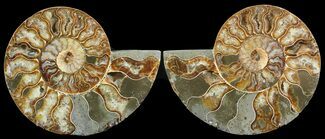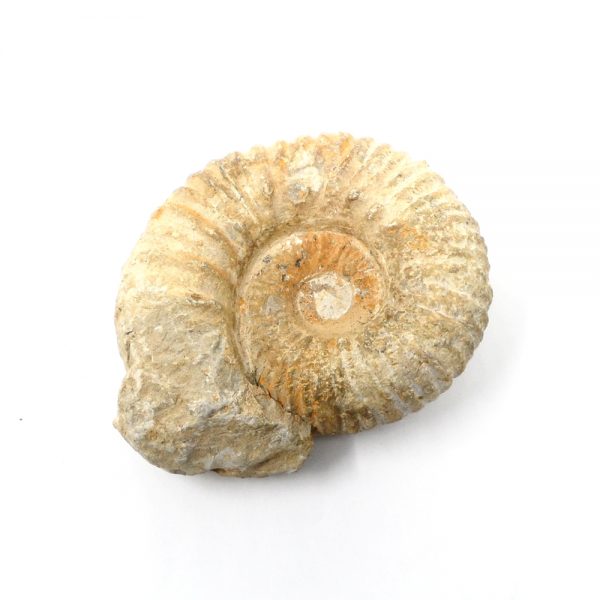
The distribution of ammonite fossils around the world is one of the key pieces of evidence that supports the theory of plate tectonics, which explains how the continents have moved over time. During this time, ammonites lived in the oceans of the world, and their fossils have been found on every continent.Īmmonites are particularly abundant in rocks from the Jurassic and Cretaceous periods, and they are used by geologists to help date and correlate rocks from different parts of the world. Scientists have identified more than 10,000 species from fossils found nearly everywhere on the planet where oceans once existed, from the Great Plains of North America to the foothills of the Himalayas.Īmmonite fossils are found in rocks that range in age from the Early Devonian to the Late Cretaceous, approximately 416 to 66 million years ago. Where are Ammonite Fossils Found?Īmmonite fossils are found all around the world, sometimes in very large concentrations. With their intricate patterns and unique shapes, they continue to capture the imagination of scientists and fossil enthusiasts alike. Overall, ammonite fossils are fascinating examples of the diversity of life that existed in the ancient seas. Baculites – These ammonites have a straight, elongated shell that is often smooth and unornamented.Placenticeras – These ammonites are known for their disc-shaped shells, which are often highly ornamented with spines or knobs.They come in a wide variety of sizes and shapes. Ammonites – The most famous type of ammonite, these fossils have a coiled shell with intricate patterns and ridges.

Ceratites – These ammonites have a distinctive shape, with a long, straight shell that is often ribbed or spiky.They are typically small and have a simple, coiled shell. Goniatites – These are the oldest type of ammonite fossils, dating back to the Devonian period.Some of the most well-known types include: Within each order, there are many different types of ammonite fossils. These orders include the Agoniatitida, Clymeniida, Goniatitida, Prolecanitida, Ceratitida, Ammonitida, and Ancyloceratina. There are seven main orders of ammonites, each with its own unique characteristics. The classification system used by scientists is based on the shape of the shell, the number of chambers, and the structure of the sutures, which are the lines where the chambers meet. Types of Ammonite Fossils Classification of Ammonite FossilsĪmmonite fossils are classified based on their shell structure, which can range from smooth to highly ornamented with intricate patterns. They are also popular among collectors and enthusiasts due to their unique beauty and historical significance. The process of fossilization can also result in the replacement of the original shell material with minerals, such as calcite or pyrite, which can give the fossil a different color or texture.Īmmonite fossils are found all over the world and can provide valuable information about the ancient environment and climate in which they lived. Over time, the sediment hardens into rock, preserving the fossilized remains of the animal. These creatures are related to modern-day squid and octopuses and were once abundant in the world’s oceans.Īmmonite fossils are formed when the remains of the animal are buried in sediment, such as sand or mud, before they can be scavenged or decomposed. What are Ammonite Fossils?Īmmonite fossils are the remains of ancient marine animals known as ammonoids, which were cephalopods that lived from the Devonian period until the end of the Cretaceous period, about 416 to 66 million years ago.


Their fossil shells usually take the form of planispirals, although some helically spiraled and nonspiraled forms (known as heteromorphs) have been found. Linking the rock layer in which a particular species or genus is found to specific geologic time periods is often possible. They are related to the modern pearly nautilus and are excellent index fossils. The shells of ammonites are made of aragonite, a crystalline form of calcium carbonate that is also found in pearls and some types of coral.Īmmonites are a distinctive class of extinct invertebrates within the Phylum Mollusca. These spiral shells were once used for buoyancy and protection from predators. The fossils of ammonites are found all over the world and are prized for their mesmerizing logarithmic spiral.

Ammonites lived during the Paleozoic and Mesozoic Eras, which equates to approximately 408 to 65 million years ago. These creatures were once the most abundant animals of the ancient seas and are now a popular subject of study among paleontologists. Ammonite fossils are the remains of an extinct group of marine animals known as ammonites.


 0 kommentar(er)
0 kommentar(er)
